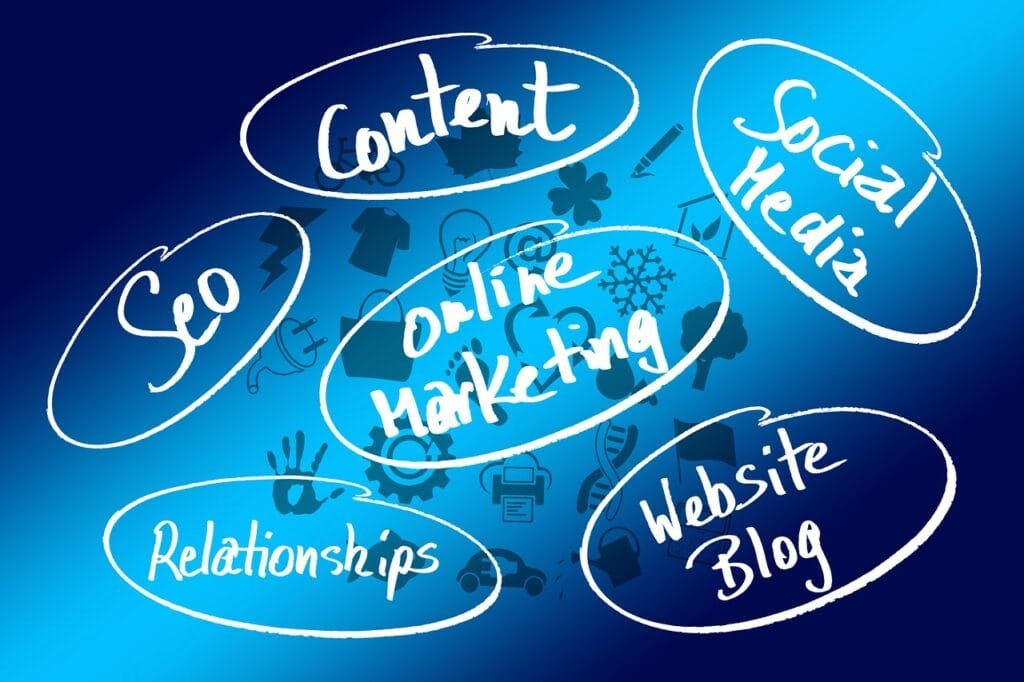SEO isn’t just about getting people to your website. It’s about delivering the right kind of people – those who are interested in what you have to offer and are more likely to convert into leads or customers. This is particularly critical for big-ticket B2B businesses, where the purchasing decisions are more complex, and the stakes are high.
The Business-to-Business (B2B) sector is one where companies sell products or services directly to other businesses. It differs from the Business-to-Consumer (B2C) sector, where businesses sell to individual consumers.
In the B2B sector, the buying process is usually more complex. It often involves several decision-makers, longer sales cycles, and higher cost considerations. This complexity is especially pronounced in big-ticket B2B businesses, where the products or services sold often involve significant investment.
Distinct Characteristics of Big-Ticket B2B Businesses
Big-ticket B2B businesses deal with products or services that carry a hefty price tag. These could be anything from industrial machinery to enterprise-level software solutions or consulting services.
The nature of these high-value transactions leads to unique characteristics. For one, the sales cycles are typically longer. It’s not uncommon for big-ticket B2B sales to take months, or even over a year, to close.
Furthermore, there’s often a team of decision-makers involved, known as the Decision Making Unit (DMU). This DMU may include people from different departments and levels of seniority, each with their specific considerations.
Lastly, the stakes are high. The impact of the purchasing decision can have long-term effects on the buying organization, so careful consideration and thorough research are the norms, not exceptions.
Why SEO is important for big-ticket B2B companies

For big-ticket B2B companies, having a strong online presence is critical. This is where SEO comes in. SEO helps these businesses appear in the search results when potential clients are looking for solutions. It ensures that the content they’ve worked hard to create is found by the right people.
But more than just driving traffic, SEO is about attracting quality leads. By optimizing for relevant keywords, big-ticket B2B companies can ensure they’re attracting people who are interested in and capable of investing in their high-value solutions. Furthermore, SEO allows these businesses to provide valuable content that aids the decision-making process, helping to nurture leads through the lengthy sales cycle.
Given the high stakes and complexity of the purchasing decisions in big-ticket B2B, the role of SEO becomes even more critical. It’s not just about being found – it’s about building trust, demonstrating value, and guiding potential clients through a comprehensive buyer journey.
SEO is more than a marketing tactic for big-ticket B2B companies. It’s a strategic tool for growth and long-term success.
Differentiating B2B from B2C SEO
At first glance, B2B and B2C SEO might seem quite similar. After all, both strategies aim to improve a website’s visibility on search engine results pages (SERPs). However, their approaches can diverge significantly due to the unique characteristics of the B2B sales cycle and customer journey.
Detailed comparison of B2B and B2C SEO strategies
B2C SEO often targets broad, high-volume keywords to attract a wide range of consumers. The content usually appeals to emotions and immediate needs, encouraging quick purchase decisions. Additionally, B2C SEO places a substantial emphasis on local SEO, as many consumers search for products or services near their location.
Conversely, B2B SEO, especially for big-ticket businesses, leans towards long-tail, highly specific keywords reflecting complex, solution-oriented search queries. The content developed in this context is more informational and educational, addressing the intricate needs of the multiple stakeholders involved in the buying process.
The Importance of Longer Sales Cycles in B2B SEO
Unlike B2C, B2B businesses often have extended sales cycles. For big-ticket B2B, these cycles can last several months or even more than a year. During this period, potential clients are likely to conduct extensive research and compare different solutions.
Because of this, B2B SEO strategy must be designed to guide prospects through each stage of this journey, from awareness to consideration, and ultimately, the decision. This means continually providing relevant, value-adding content that addresses potential clients’ evolving needs and queries.
Role of decision-making units (DMUs) in B2B SEO
In B2B, particularly in big-ticket scenarios, purchases are typically not made by an individual but a group of decision-makers known as the Decision-Making Unit (DMU). The DMU can consist of different roles like end users, influencers, gatekeepers, decision-makers, and buyers. Each member might have distinct concerns and considerations regarding the purchase.
As such, B2B SEO needs to cater to a broader range of informational needs and perspectives. The content created should resonate with various roles within the DMU, addressing the diverse questions they might have during the evaluation process.
The Impact of High Stakes Purchases on SEO Strategies
When the cost of purchase is high, as is the case with big-ticket B2B businesses, there’s a lot riding on every decision. Buyers need to ensure they’re making the right investment, which can result in an even more exhaustive research process.

This intensifies the need for comprehensive, authoritative content that not only shows up in SERPs but also builds trust and confidence among prospective clients. High-value keywords, thought leadership pieces, detailed product descriptions, and case studies become pivotal elements of the SEO strategy in this context.
This part of the discussion provides a clear demarcation between B2B and B2C SEO strategies. The complexity of the B2B buying journey, particularly for high-value transactions, requires a more nuanced, multi-faceted approach.
Deep Dive into Big-ticket B2B SEO
Challenges unique to big-ticket B2B SEO
Nurturing a lead to a successful conversion in a big-ticket B2B business is a marathon, not a sprint. With an extensive and often complex buying cycle, SEO strategies for these businesses face several unique challenges.
- Targeting the right audience: Unlike B2C businesses that usually have a broad target market, B2B businesses cater to a very niche audience. This requires more sophisticated keyword research and usage to accurately capture the informational needs of these prospects.
- Addressing complex customer needs: Big-ticket B2B purchases involve significant monetary investment and potential business impact. Therefore, customers typically have complex, specific needs that must be addressed convincingly through SEO-friendly content.
- Navigating the DMU: As discussed earlier, multiple decision-makers with differing concerns are involved in a big-ticket B2B purchase. Catering to all these perspectives can be a daunting task.
- Maintaining visibility throughout the extended sales cycle: Due to the long sales cycle, it’s vital to stay on top of SERPs to ensure the business remains visible to the prospects as they move through their buyer journey.
Opportunities for leveraging SEO in big-ticket B2B businesses
Despite these challenges, big-ticket B2B businesses present ample opportunities for effective SEO strategies.
- Building thought leadership: By consistently providing high-quality, value-adding content, businesses can position themselves as industry experts, thus boosting credibility and attracting high-quality leads.
- Capturing long-tail keywords: Because of their niche market and specialized offerings, big-ticket B2B businesses can capitalize on long-tail keywords that precisely match their audience’s queries.
- Leveraging content variety: Big-ticket B2B businesses can benefit from an array of content types, from whitepapers and case studies to webinars and podcasts, to engage prospects at various stages of the sales cycle.
- Relationship cultivation: The extended sales cycle provides ample opportunity to nurture relationships and build trust with potential clients, translating to higher conversion rates and customer loyalty.
Case Study: IBM’s use of SEO in a big-ticket B2B context
A quintessential example of SEO in a big-ticket B2B context is IBM. Given the high-value and complex nature of its offerings, IBM faces a prolonged sales cycle and a vast DMU. To navigate this, IBM uses a comprehensive SEO strategy.
The cornerstone of IBM’s SEO strategy is its focus on long-tail, highly-specific keywords. IBM targets these keywords in its in-depth blog posts, white papers, and other types of content that cater to various stages of the buying journey.
The content is highly educational, addressing the specific needs and pain points of its target audience, and catering to multiple stakeholders within the DMU. By doing so, IBM not only ensures it ranks highly on SERPs but also positions itself as a thought leader in the industry, building trust with potential clients.
This deep dive into big-ticket B2B SEO provides us with an understanding of the challenges and opportunities that exist in this field. Having laid this foundation, let’s now explore the technical aspects of SEO for these businesses.
Technical SEO for Big-ticket B2B Businesses
Explanation of Technical SEO
While content and keywords form a significant part of SEO, technical SEO is the engine that propels a site to rank well in SERPs. Technical SEO refers to improving the technical aspects of a website to increase its visibility in search engines. It involves optimizing your site for crawling and indexing, improving site speed, ensuring mobile-friendliness, and implementing secure protocols, among other tasks.
The Role of Website Structure in B2B SEO
Website structure is crucial for big-ticket B2B businesses. A well-structured website not only provides a better user experience but also aids search engines in understanding your site’s content. A logically organized site helps in:
- Enhancing crawlability: A well-structured website makes it easier for search engine bots to crawl and index the site, improving its visibility.
- Boosting user experience: A user-friendly structure helps visitors navigate the site easily, increasing engagement and reducing bounce rate.
- Facilitating link equity distribution: A well-linked structure ensures link equity is evenly distributed across the site, which helps improve the ranking of each page.
Importance of Site Speed and Mobile Optimization
Site speed and mobile optimization are two critical factors that significantly impact SERPs.
- Site speed: Slow-loading websites not only frustrate users but also harm search rankings. Google and other search engines favor sites that load quickly to enhance user experience.
- Mobile optimization: With the rise in mobile browsing, having a mobile-optimized site is no longer an option, it’s a necessity. Search engines favor mobile-friendly websites, and mobile optimization is now a critical ranking factor.
Lesser-known Strategies Like Schema Markup and XML Sitemaps
Two often overlooked but vital aspects of technical SEO are schema markup and XML sitemaps.
- Schema markup: This is a form of microdata that helps search engines understand your site’s content better. When implemented correctly, schema markup can enhance the way your page appears in SERPs, potentially increasing click-through rates.
- XML sitemaps: A sitemap is essentially a roadmap of your website that helps search engines find, crawl and index all of your site’s content. An XML sitemap lists a website’s important pages, ensuring Google can find and crawl them all.
Case Study: How Oracle Improved Site Structure for Better SEO Results
Oracle, a giant in the world of B2B technology, faced a significant challenge with its website structure. With an extensive range of products and services, Oracle’s website was complex and difficult to navigate.
To improve the site structure, Oracle implemented a hub-and-spoke model. The hub pages represented broad categories, with the spoke pages detailing specific products and services. This made the site more user-friendly and helped search engines understand the context of each page better, improving Oracle’s visibility in search results.
Oracle also worked on optimizing site speed and implemented a mobile-first design, recognizing the growing trend of mobile searches. This led to improved user experience, lower bounce rates, and increased time on site, all of which positively impacted their search engine rankings.
Technical SEO might seem daunting, especially for big-ticket B2B businesses with large, complex websites. However, as the Oracle example shows, with careful planning and execution, technical SEO can significantly enhance your site’s search visibility.
On-Page SEO Strategies for Big-ticket B2B Businesses
On-page SEO refers to the practice of optimizing individual web pages to rank higher and attract more relevant traffic in search engines. On-page SEO includes both content and HTML source code of a page. The key components of on-page SEO are content quality, keyword optimization, and other HTML elements like title tags, headers, and meta descriptions.
The Critical Role of Keyword Research and Usage
Keyword research is one of the cornerstones of on-page SEO. It involves identifying popular words and phrases people enter into search engines. Effective keyword research allows you to understand the language your potential customers use when thinking about your products or services, and optimize your content accordingly.
The placement of keywords is also vital. Ideally, they should be included in the page title, headings, body of the content, and URL if possible. However, the emphasis should be on natural usage rather than stuffing them in, as search engines can penalize overuse.
Importance of Meta Descriptions and Title Tags
Meta descriptions and title tags play a significant role in on-page SEO.
- Meta descriptions: These are brief summaries of web page content. They appear under the page title on a SERP and serve as a pitch to convince users to click through. While not a direct ranking factor, a well-written meta description can significantly improve click-through rates.
- Title tags: These are HTML elements that specify the title of a web page. They are displayed on SERPs and play a considerable role in search rankings. An effective title tag should be descriptive, unique, and keyword-rich.
Strategies for Effective Header Hierarchy and Image Optimization
Header hierarchy and image optimization are other elements of on-page SEO often overlooked.
- Header hierarchy: The proper use of header tags (H1, H2, H3, etc.) helps both readers and search engines understand your content better. The H1 tag should be reserved for the page title, with H2s and H3s marking section headings and subheadings, respectively.
- Image optimization: Images can also contribute to your SEO. By using relevant file names, reducing file sizes for faster loading, and using alt text to help search engines understand the context of the image, you can enhance your on-page SEO.
Case Study: Cisco’s Effective Use of On-Page SEO
Cisco, a worldwide leader in IT, networking, and cybersecurity solutions, offers an excellent example of effective on-page SEO. The company uses relevant and long-tail keywords in its product descriptions, blog posts, and even video titles, helping it attract targeted traffic. They also use clear and compelling meta descriptions and title tags to drive click-throughs from SERPs.
Further, Cisco uses a clear header hierarchy on its web pages and blog posts, making content easier to skim and understand for both users and search engines. Their use of well-optimized images and videos further enhances their on-page SEO, making their pages engaging and accessible.
On-page SEO, when done correctly, can significantly improve a page’s search visibility. From keyword usage and meta elements to headers and images, every component plays a critical role. By optimizing these elements, big-ticket B2B businesses can drive more targeted traffic to their sites, enhancing visibility, engagement, and conversions.
Content Marketing & SEO in Big-ticket B2B Businesses
The Intersection of Content Marketing and SEO
Content marketing and SEO are closely linked. The former involves creating and distributing valuable content to attract, inform, and engage an audience, while the latter focuses on optimizing that content to rank well in search engines. Essentially, content marketing feeds SEO. By creating high-quality content that is well-optimized for search engines, you can improve your website’s visibility, drive more organic traffic, and engage potential customers more effectively.
Importance of Producing Quality, SEO-Friendly Content
Quality is the cornerstone of SEO-friendly content. This involves creating content that provides value to your audience, solves their problems, and engages them in meaningful ways. Google rewards websites that provide high-quality content by ranking them higher in search results.
To create SEO-friendly content, focus on topics relevant to your audience and industry, incorporate targeted keywords naturally, use clear and concise language, and structure your content for easy readability with a proper header hierarchy.
Strategies for Optimizing Blog Posts, White Papers, and Case Studies

Different types of content require slightly different optimization strategies:
- Blog Posts: These should be rich in relevant keywords, have a clear and concise meta description, use internal links to keep users on your site, and include calls to action where appropriate.
- White Papers: These tend to be more in-depth, so they naturally use industry-related keywords. Optimizing them also includes creating a compelling title, an engaging summary, and incorporating internal links to relevant content.
- Case Studies: These can be optimized by focusing on keywords related to the client’s industry or the solutions provided. It’s also important to use compelling headlines, provide summaries, and use internal links.
Lesser-Known Content Hacks, Like Skimmable Content and Bucket Brigades
Making your content skimmable by using bullet points, numbered lists, and short paragraphs helps users quickly find the information they’re looking for and improves your SEO. Bucket brigades, on the other hand, are words and phrases designed to keep people reading. They act as a bridge between ideas and create curiosity. Some examples include: “Here’s the deal,” “But wait, there’s more,” and “Here’s why.”
Case Study: HubSpot’s Content Marketing and SEO Success
HubSpot, a leading growth platform, has mastered the art of blending content marketing with SEO. Their comprehensive library of content, including blog posts, white papers, and case studies, offers valuable information for their audience and is well-optimized for search.
For instance, their blog posts are rich in targeted keywords, are skimmably structured, and contain plenty of internal links to keep visitors on their site. Their downloadable resources like white papers and case studies are SEO optimized and provide value, which encourages sharing and backlinks.
With an integrated approach to content marketing and SEO, big-ticket B2B businesses can create content that not only engages and informs their audience but also improves their organic search visibility. This helps to attract more relevant traffic, generate more leads, and ultimately drive more sales.
Off-Page SEO for Big-ticket B2B Businesses
The Relevance of Off-Page SEO for B2B Businesses
Off-page SEO refers to all the activities you do away from your website to raise your site’s ranking on search engines. While on-page SEO involves optimizing the elements of your website, off-page SEO is about improving perception of your site and business in the digital universe – particularly among other websites.
For big-ticket B2B businesses, off-page SEO is a must as it increases website visibility, credibility, and customer trust. While it’s more difficult to control off-page factors, they’re crucial in your business’s SEO performance.
The Importance of Backlinks and Strategies for Acquiring Them

Backlinks are links from one website to another. They’re like votes of confidence from the digital community, signifying the value and relevance of your content. The more high-quality backlinks your website has, the more trustworthy and authoritative it seems to search engines.
In the context of big-ticket B2B businesses, backlinks can come from a variety of sources like trade associations, industry publications, or partners. Strategies for acquiring them include:
- Content Creation & Promotion: Create compelling, unique, relevant content that others want to reference and link to, and then let people know about it.
- Submissions: Submit your news to press releases, submit your website to directories, and submit your blog to blog directories.
- Reviews & Mentions: Encourage your partners, customers, or industry experts to write about your business in reviews or blog posts.
- Partnerships: Establish partnerships with other companies or influencers in your industry who can link to your site in their content.
Strategies for Social Media Optimization and Influencer Outreach
Social media can greatly enhance your SEO efforts. By regularly posting on platforms like LinkedIn, you can drive more traffic to your site and boost your search rankings. Ensure your posts are keyword-optimized, engaging, and shareable.
Influencer outreach involves partnering with influencers in your industry who have a large online following. By having these influencers share your content or link to your website, you can reach a larger audience and earn more backlinks.
Case Study: Salesforce’s Off-Page SEO Strategy
Salesforce, the world’s leading CRM software and enterprise cloud ecosystem, has utilized off-page SEO strategies effectively. They’ve earned a substantial number of backlinks by providing high-quality, valuable content that other sites want to link to.
In addition to these content-based strategies, Salesforce has leveraged social media platforms to share and promote their content, further increasing their visibility and backlink potential.
Salesforce’s effective use of off-page SEO strategies demonstrates how they can help big-ticket B2B businesses improve their online visibility, build their brand reputation, and ultimately drive more traffic to their website.
In summary, off-page SEO is a crucial component of a successful SEO strategy for big-ticket B2B businesses. By investing time and effort into building high-quality backlinks, optimizing your social media presence, and partnering with influencers, you can improve your online visibility and credibility, helping you reach more potential customers.
Local and International SEO for Big-ticket B2B Businesses
Importance of Local and International SEO in a Globalized Market
In today’s global market, businesses often operate across different regions and even countries. This brings about the need for both local and international SEO.
Local SEO focuses on optimizing your website to be found in local search results. This is particularly important for big-ticket B2B businesses with physical locations or those targeting customers in specific geographic areas.
On the other hand, international SEO is about optimizing your website so that search engines can identify the countries you wish to reach and the languages you use for business.
Strategies for Optimizing for Local Search
Optimizing for local search requires a focus on location-specific keywords and a strong presence on Google My Business.
- Location-Specific Keywords: Include keywords that specify your location in your meta tags, content, and alt text.
- Google My Business: Keep your Google My Business profile up-to-date, complete, and accurate. This can significantly boost your local search visibility.
- Local Business Listings: Ensure your business is listed in local directories and your NAP (Name, Address, Phone number) details are consistent across all platforms.
Complexities of International SEO and Strategies for Overcoming Them
International SEO is far more complex, with several additional considerations such as language, cultural differences, and legal requirements.
- Hreflang Tags: Use hreflang tags to specify the language and geographical targeting of a webpage.
- Localized Content: Create and optimize content specifically for your target market’s language and cultural context.
- URL Structure: Use a clear URL structure that indicates the country and language of each page to search engines.
Case Study: Siemens’ Successful International SEO Strategy
Siemens, a German multinational conglomerate, operates in various sectors globally. They’ve deployed an effective international SEO strategy to maintain a robust online presence in different regions.
Siemens’ website is split into subdomains for each country. Each subdomain provides content that’s both language-specific and tailored to local industry trends. Moreover, their use of hreflang tags ensures Google serves the right version of their site to users from different regions.
This international SEO strategy, combined with their commitment to providing high-quality localized content, has helped Siemens reach their audience in the various countries they operate in, ultimately improving their global visibility and brand strength.
As we conclude this section, remember that SEO is not just a global but also a local affair. Whether you’re a multinational business or a local entity targeting international clients, a good grasp of both local and international SEO will help you reach and engage your intended audience effectively.
Wrapping Up
Whether it’s understanding the technical aspects of SEO, such as website structure, site speed, and lesser-known strategies like schema markup and XML sitemaps, or getting a grasp on on-page SEO strategies including keyword research, meta descriptions, title tags, and image optimization, SEO offers a multifaceted approach to improve your website’s visibility.
Producing quality, SEO-friendly content can be a game-changer for your business, with blog posts, white papers, and case studies serving as powerful tools.
Off-page SEO, comprising backlinks, social media optimization, and influencer outreach, adds another layer of complexity to the mix. However, as demonstrated by the Salesforce case study, mastering these strategies can yield significant rewards. The relevance of local and international SEO in a globalized market was highlighted, and Siemens’ success story served as a brilliant example of effective international SEO strategy.
The intricacies of SEO for big-ticket B2B businesses can seem daunting, but as we’ve seen through numerous examples, the implementation of sound SEO strategies can significantly bolster online visibility, brand recognition, and ultimately, profitability. The time, effort, and resources invested in SEO can yield considerable returns in the long run.
Remember, in the world of SEO, the only constant is change. Stay adaptable, stay curious, and most importantly, stay ahead.
Read Next:
- 17 Best High-Performing Landing Page Tools: Skyrocket Conversions
- 11 Marketing Analytics Tools to Elevate Your Data-Driven Strategies
- How to Automate Lead Nurturing for your Business: A Deep Dive!
- Multivariate Testing: The Ultimate Guide to Boost Your Conversions!
- A/B Testing: The Ultimate CRO Guide
- Why and How to Incorporate Webinars into Your Marketing Strategy
- Usability Testing for CRO: Upgrade Your User Experience!





















